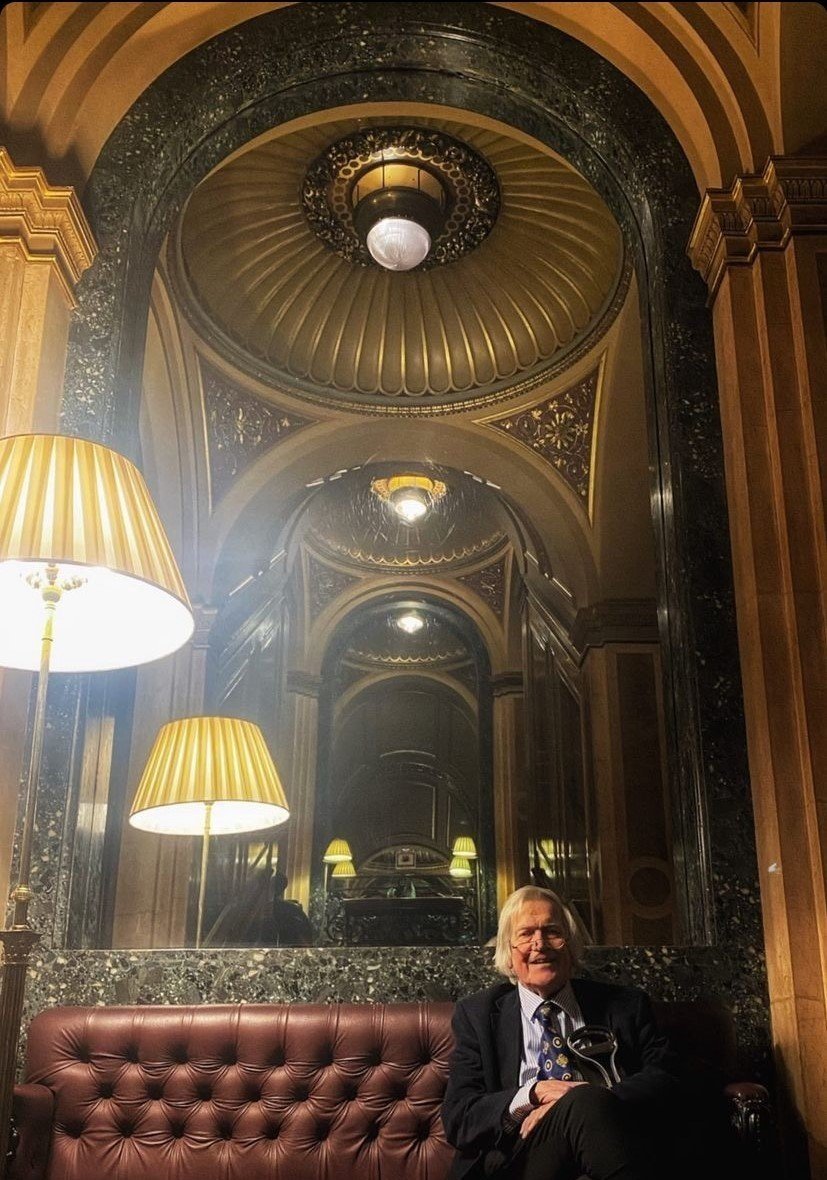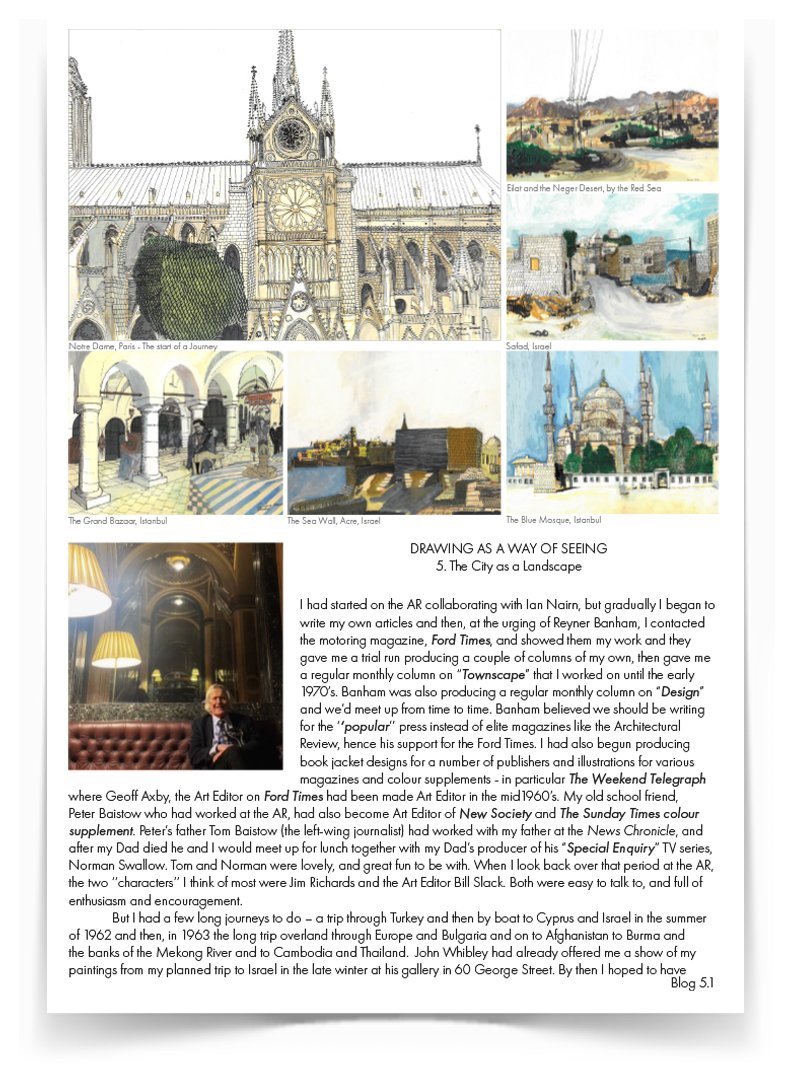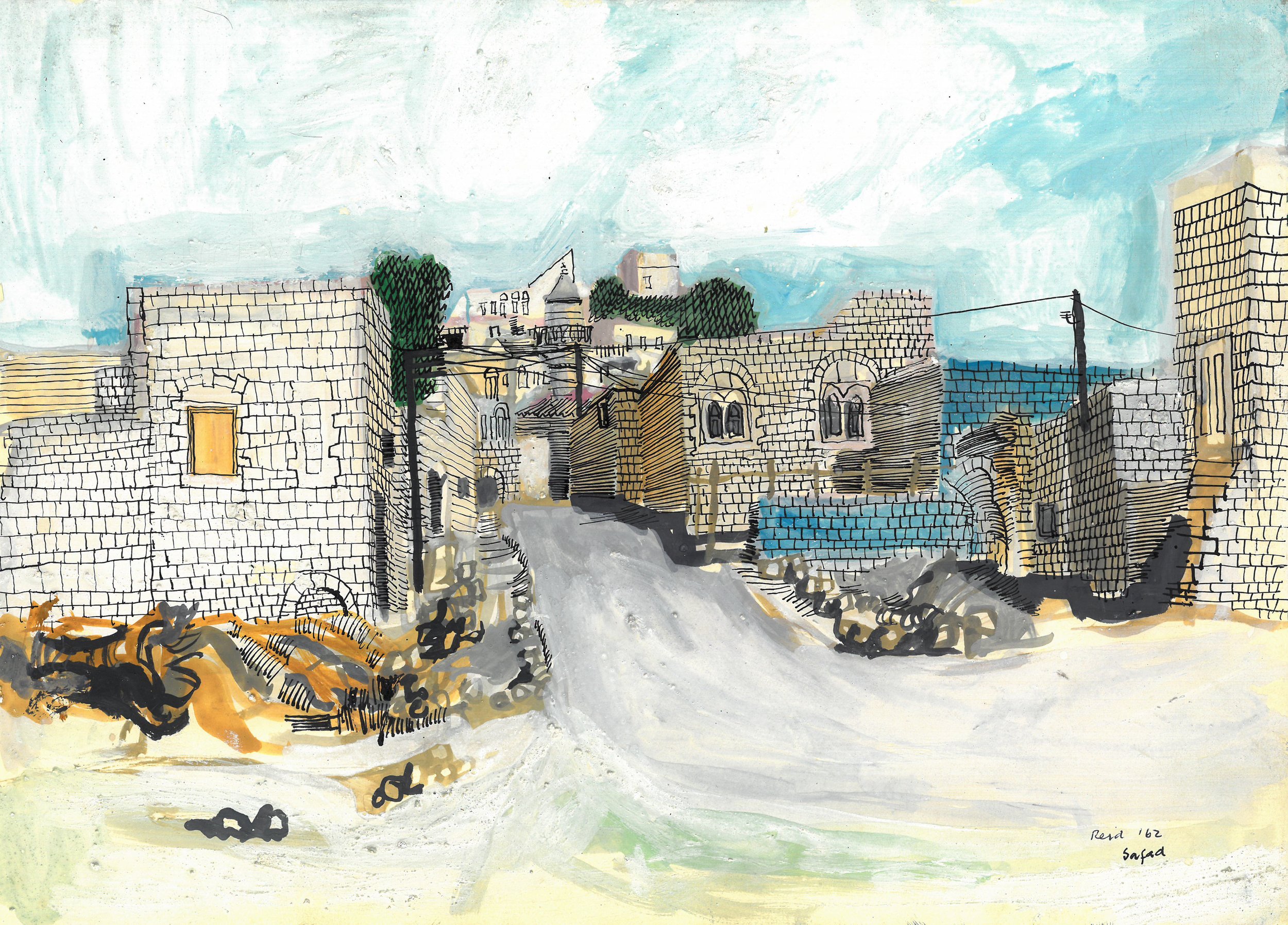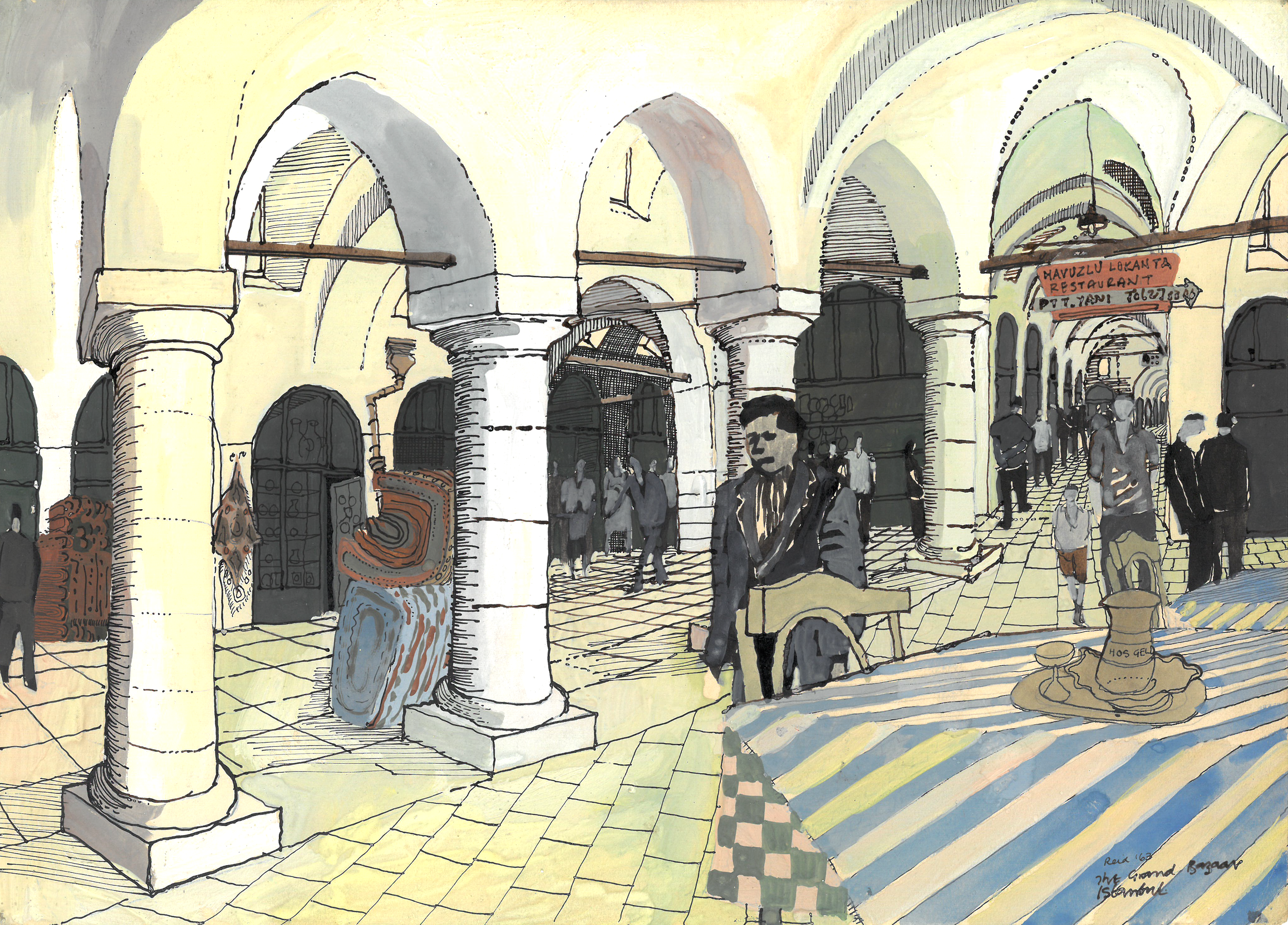Notre Dame, Paris - The start of a Journey
The City as a Landscape
I had started on the AR collaborating with Ian Nairn, but gradually I began to write my own articles and then, at the urging of Reyner Banham, I contacted the motoring magazine, Ford Times, and showed them my work and they gave me a trial run producing a couple of columns of my own, then gave me a regular monthly column on “Townscape” that I worked on until the late 1970’s. Banham was also producing a regular monthly column on “Design” and we’d meet up from time to time. Banham believed we should be writing for the ‘‘popular’’ press instead of elite magazines like the Architectural Review, hence his support for the Ford Times.
I had also begun producing book jacket designs for a number of publishers and illustrations for various magazines and colour supplements - in particular The Weekend Telegraph where Geoff Axby, the Art Editor on Ford Times had been made Art Editor in the mid1960’s. My old school friend, Peter Baistow who had worked at the AR, had also become Art Editor of New Society and The Sunday Times colour supplement. Peter’s father Tom Baistow (the left-wing journalist) had worked with my father at the News Chronicle, and after my Dad died he and I would meet up for lunch together with my Dad’s producer of his “Special Enquiry” TV series, Norman Swallow. Tom and Norman were lovely, and great fun to be with.
When I look back over that period at the AR, the two ‘‘characters’’ I think of most are Jim Richards and the Art Editor Bill Slack. Both were easy to talk to, and full of enthusiasm and encouragement. They were the kind of people you wanted to drink with in the comfort of the Bride of Denmark in the basement below.
But I had a few long journeys to do – a trip through Turkey and then by boat to Cyprus and Israel in the summer of 1962 and then, in 1963 the long trip overland through Europe and Bulgaria and on to Afghanistan to Burma and the banks of the Mekong River and to Cambodia and Thailand.
John Whibley had already offered me a show of my paintings from my planned trip to Israel in the late winter at his gallery in 60 George Street. By then I hoped to have paintings of Venice, Turkey and Cyprus as well as Israel when I got back. And my Dad had already given me a contact with Ted Lurie an old friend of his – a journalist who had worked for a while at the News Chronicle and was now Editor of The Jerusalem Post (1955-1974). The Jerusalem Post was the second oldest daily founded in 1932 as The Palestine Post, by Gershon Agron, who later became mayor of Jerusalem. The Palestine Post became The Jerusalem Post after the establishment of the state in 1950. As someone wrote later “and what is remarkable is that It has not only outlived subsequent Hebrew publications that had faded into the dust of history but has expanded at a time when print media is on the decline”.
Ted Lurie asked me to call him if and when I was in Tel Aviv (as someone wrote, if Tel Aviv was the media capital of Israel, Jerusalem is the media cradle). He was interested to see if I would contribute two or three illustrated pieces on the distinctive architecture I would see on my planned journey to Israel. The illustrations I had produced for the J H B Peel articles for The Weekend Telegraph sprang to mind. I thought they worked quite well and I had fun doing them. I wrote back to Lurie to say I would call him when I arrived in Tel Aviv. A friend of mine who was at the Northern with me lived on the edge of Tel Aviv and that he had told his mother of my intended visit that summer and she had asked me to call her. As for my articles, needless to say I was disappointed with what I produced. But I was still learning!
At the time of my visit, Israel was a considerably smaller state than that secured by the Jewish nation after the Six-day War of 1967 and then the Yom Kippur War of October 6th - 25th October 1973 – nearly four times its previous size. Egypt last the 23,500 sq mile Sinai Peninsula and the Gaza Strip, Jordan lost the West Bank and East Jerusalem and Syria lost the strategic Golan Heights.
When I finally got to Israel via a boat from Istanbul which called at Cyprus on the way down and dropped me off at Haifa, the pre-1967 map of Israel was considerably smaller. To the south there was a long triangle of desert narrowing southwards towards Eilat which formed the pinch point on the Gulf of Aquaba. The Gaza Strip on the south west corner along the Mediterranean was not occupied until after the Six-day War and the West Bank, outside of Israel’s control in 1962 ran from Hebron, along the edge of the Dead Sea and past Jericho and around Jerusalem. Syria had control of the Golan Heights in the north east corner above the Sea of Gallilea.
When I went down to Eilat, we had to travel in an armed convoy after an incident the previous month, until we reached the Red Sea which, at that time, seemed to be single storey or two to three storey buildings most with corrugated roofs or flat roofs. The townscape of Haifa and Acre were every attractive and, of course, Tel Aviv had the long beach. I travelled everywhere that I could but I called Ted Lurie first to say hello and we arranged to meet. The commission was to write several short articles on the traditional buildings I had seen and how many had been adapted to the particular climate. Each piece would have two or three drawings. Looking back now, all I can remember was how horrid my drawings looked and how naïve my written observations. I realized I still had a great deal to learn. As we huddled inside the carriages, I thought of John Wayne’s ‘‘Stagecoach’’.
Ted Lurie was born in the states, graduated at Cornell University in 1930 and settled in Palestine the same year. He’d been The Jerusalem Correspondent for The Associated Press in 1948 and earlier had been Israel news correspondent for the Central News Agency and The News Chronicle in London and for the Colombia Broadcasting Systems. And that was how my Dad had met up with him and they had clearly been good friends and I imagine my father having one or two lunches with him at the Reform Club.
Lurie was a lovely man who had been War Correspondent of the Jewish Brigade and British Eighth Army and of Hagana, the Israeli underground movement in 1948. He introduced me to a colleague of his, a lady by the name of Lea Ben-Dor, the daughter of George Halpern a prominent Zionist from Germany. She was educated at Roedean, Cambridge and London University. She joined The Palestine Post as it was known before 1948 and took leave during World War II to serve the British Army in Egypt. She worked for Ted Lurie and, like him, was strongly pro-Ben Gurion. She was quite hawkish I was told and was a staunch admirer of the Defence Minister, Moshe Dayan after the Yon Kippur War when many of her colleagues had different views. She was very friendly and sat in as Lurie gave me his brief for my contributions. They would pay me in cash on delivery, but that I wouldn’t (at that time) be able to take the cash out of Israel – I had to spend it there! Several good meals and with friends I had made, I seem to remember. And I did seriously think of finishing my architectural studies in Palestine, as I had met several wonderful architects I wanted to work with. It was all very tempting.
There were many advantages to the traveler in those days, but the movement of money around more easily was not one of them. Before heading for Israel, I had gone to a Bank in Istanbul to draw some money, and wasn’t able to. I managed to send a telegram to my Dad asking him to transfer some money from my own travel fund, by which time I was already on the Turkish maritime boat to Israel. My dad finally transferring the money to me was much more difficult than we had imagined. All he had to go on was that I was on this boat. But he had a good friend called Tom Guard Head of a transport company, and who lived nearby, with little details to go on (no mobiles!), the two managed to track me down and realized the boat I was on would have to stop at Larnaka, in Cypress and arranged for a member of Tom’s team to board the ship after an okay from the Turkish Maritime boat owners and to hand me a bundle of cash! Little problems, like this, were bound to happen, but, looking back, that world was so beautiful despite those obvious problems that you took it all in your stride.







